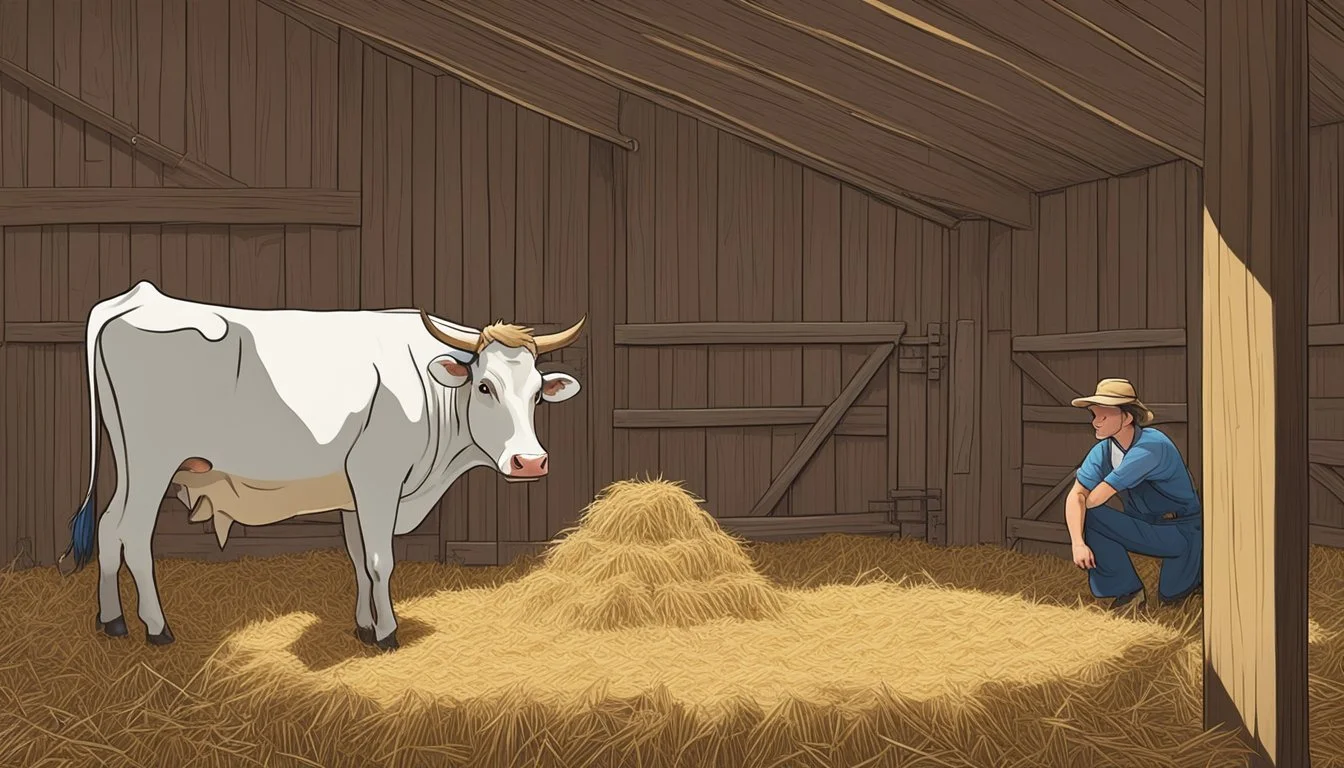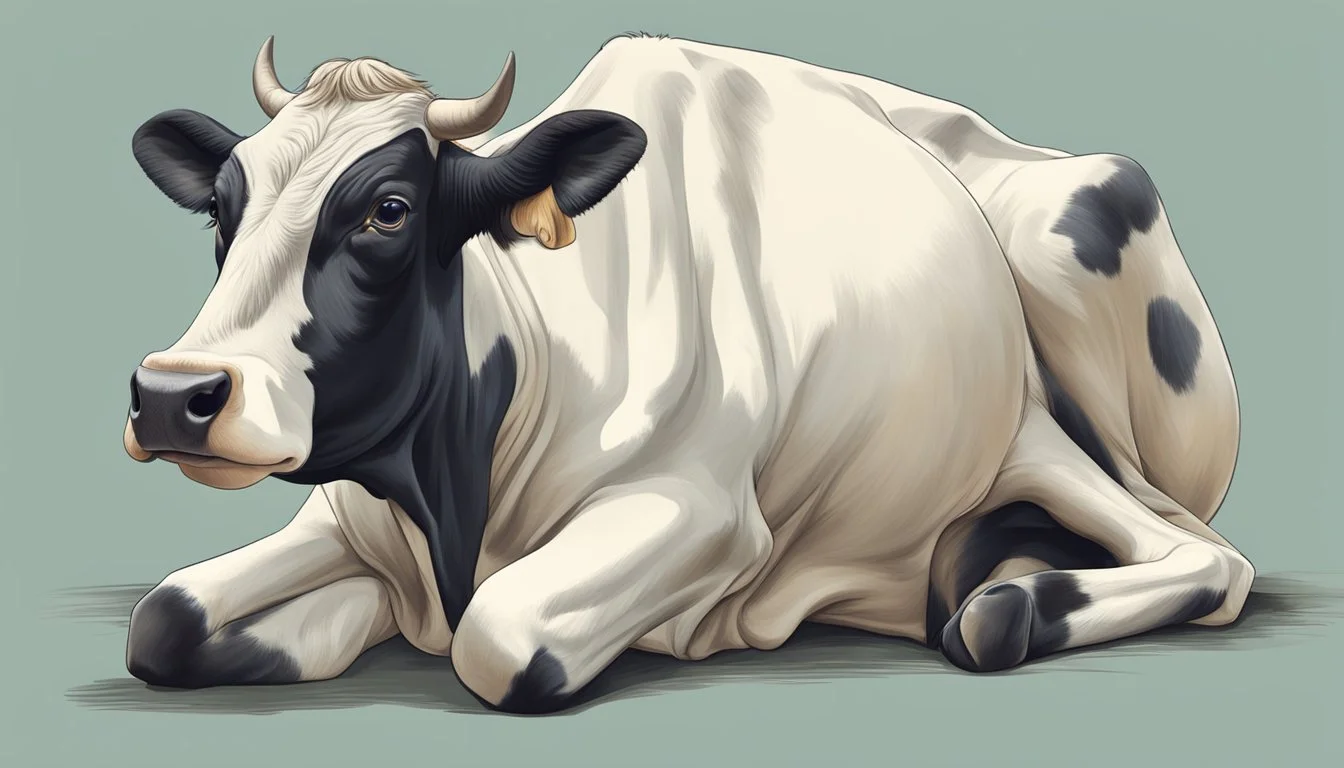How do I assist a cow during birth
Essential Steps for a Safe Delivery
Assisting a cow during the birthing process, or calving, is a critical skill for livestock owners and farmhands. It ensures the safety and health of both the cow, often referred to as a heifer if birthing for the first time, and the calf. While many cows deliver without intervention, understanding when and how to assist can be the difference between life and death for the newborn calf and occasionally for the heifer as well. Therefore, it's essential to recognize the signs that indicate a cow is in labor and to know the appropriate steps to take if complications arise.
Calving is a natural process, yet it's not without potential complications that may require human assistance. From ensuring that the cow has a clean, safe environment for birthing to knowing how to intervene if a calf is presented incorrectly, the actions taken during this critical time are pivotal. It involves monitoring the stages of labor and being equipped with the right knowledge and tools to help the heifer or cow and her calf.
Factors such as the heifer's health, calf's positioning, and the length of labor all play a role in the chances of a successful birth. Quick and appropriate action can help prevent undue stress and reduce the risk of infection or injury. Thus, recognizing the stages of labor and identifying signs of distress is crucial. These skills not only support the well-being of the animals involved but also contribute to the overall success and productivity of the herd.
Understanding the Stages of Labor
To successfully assist a cow during birth, one needs a clear understanding of the labor signs and the stages of parturition. Knowing when to intervene is critical for the wellbeing of both the cow and the calf.
Identifying Cow Labor Signs
The initial phase of labor in cows presents with certain behavioral changes. One may observe the cow becoming restless, isolating herself, and showing signs of discomfort such as tail raising and frequent lying down and standing up. These behaviors suggest that the preparatory stage is underway.
Stages of Parturition
Parturition in cows is divided into three distinct stages:
Preparatory Stage: This involves the dilation of the cervix and uterine contractions beginning.
Expulsion of the Calf: The actual birthing process, marked by the appearance of the water bag and the calf.
Expulsion of the Placenta: The final stage where the afterbirth is expelled, which is crucial for the cow's post-birth health.
Preparatory Stage
During the preparatory stage, the cow's cervix dilates, preparing for the birth of the calf. This stage can last for 2 to 6 hours and is characterized by mild, irregular contractions which become more frequent and intense over time.
Timing Contractions
Timing the contractions is key to understanding labor progress. They typically start far apart and become more regular and closer together as labor progresses. If a cow shows no clear progress to the second stage of labor within 6 hours or remains in the second stage for longer than 1 to 2 hours without delivering the calf, it may be necessary to provide assistance.
Preparing the Birthing Environment
When assisting cows with calving, a well-prepared environment is crucial for the health and safety of both the cow and the calf. Adequate preparation can prevent complications and promote a successful birthing process.
Choosing the Right Pen
The selection of the appropriate pen is essential for calving. A calving pen should provide safety and comfort for the heifer and allow enough space for her to lie down and the birthing process to occur. The pen must also offer easy access for the farmer to assist if needed. Facilities should be sturdy and free of hazards that could injure the cow or calf.
Importance of Cleanliness
Maintaining a high standard of hygiene is key during the birthing process. Before the cow shows signs of labor, the pen should be cleaned and provided with fresh, clean bedding, such as straw, to minimize the risk of infection. Proper cleanliness helps protect the vulnerable newborn calf from bacteria and ensures the mother has a sanitary space to recover post-delivery. Regular disinfection of tools and hands is also a critical aspect of birthing hygiene.
Recognizing When Assistance Is Needed
During the birthing process of cows, it is crucial to determine the right moment for intervention to ensure the safety and health of both the heifer and the calf. The key to successful assistance is vigilant monitoring and understanding the signs of normal and problematic labor.
Monitoring Labor Progress
Observation is paramount as a cow approaches her due date. Recognize that the stages of labor should advance at a normal pace, with the cow displaying regular uterine contractions. These contractions signal the beginning of labor. Farmers and caretakers should note the onset of labor as stage one, which generally lasts 2-6 hours, and involves the dilation of the cervix.
Intervention Guidelines
Intervention should be timely and align with established guidelines. If the cow has been in active labor for two hours without progress, it is time to consider assistance. It's important to have clean hands and equipment and to contact a vet if the situation does not improve or the physical state of the cow worsens. Ensure that the necessary supplies and equipment for calving are available and that you are familiar with their use.
Signs of Dystocia
Dystocia, or difficult birth, may occur due to abnormal presentation of the calf, such as breech or leg back position. Watch out for signs such as excessive straining without a calf presenting, or if the water bag is visible for over an hour with no progress. In these cases, prompt and correct intervention is required to correct malpresentation and ensure the health of the calf and the cow. Knowledge of how to tell when a cow needs assistance during calving can be lifesaving.
Assisting with the Birth
When a cow is giving birth, understanding when and how to provide assistance ensures both the health of the cow and the calf. Knowledge of proper techniques and the ability to manage complications are essential for a successful delivery.
Proper Techniques for Pulling a Calf
When pulling a calf, it is crucial to wait until the cow's cervix is fully dilated. Gentle, consistent pressure should be applied in sync with the cow's contractions. Attach calving chains or straps to the calf’s legs, placing them above the fetlock joints. To avoid injury, pull downward at a 45-degree angle when the cow is lying down, shifting to horizontal when she stands.
Managing Abnormal Presentations
In cases of abnormal presentation, where the calf is not positioned correctly for birth, it is important to first identify the presentation and position of the calf. For example, a breech presentation requires different techniques compared to a forward presentation with the calf’s legs back. If safe correction of the presentation is not possible, seek veterinary assistance immediately to avoid endangering the calf and cow.
Handling Calving Complications
Complications such as uterine torsion, fetal malpresentation, or retained fetal membranes may arise during calving. Restrain the cow adequately without causing her stress. If the membranes have been ruptured and the calf is not progressing, assess whether you can relieve any pressure without risk of injury. For retained fetal membranes or other serious calving complications, it is advisable to contact a veterinarian, as these may require professional intervention. Always monitor the progress closely and exercise patience; rushing can harm both the cow and the calf.
Post-Delivery Care
Following the delivery of the calf, immediate and appropriate postpartum care is essential to ensure both the cow and calf's health. This involves diligent observation, managing placental expulsion, and securing the calf's vital first nutrition.
Monitoring Cow and Calf
Calf: Once the calf is born, they should show signs of breathing and vitality. Promptly ensure the calf is dry and in a clean environment. The calf should attempt to stand and nurse within the first few hours post-birth.
Cow: Observing the cow post-delivery is crucial for detecting any signs of distress or complications, like bleeding or the mother's failure to accept the calf.
Managing the Placenta
The delivery of the placenta occurs within a few hours to up to a day after parturition. A failure to pass the placenta, known as retained placenta, can lead to infections and should be monitored closely. Regular checks should be performed, and if the placenta has not passed within 24 hours, seek veterinary assistance.
Ensuring Calf Receives Colostrum
Colostrum, the first milk rich in antibodies, is imperative for the calf's immunity. The calf should receive it ideally within the first two hours and certainly within the first 12 hours. Calf health and survival rates are significantly improved when they ingest an adequate amount of colostrum soon after birth.
Medical Interventions
In managing calving in cows, timely medical interventions can be crucial to ensuring the health of both the cow and calf. These may involve professional veterinary assistance, an understanding of when to perform a c-section, and familiarity with common treatments appropriate for complications during labor.
When to Call a Veterinarian
A veterinarian should be called if there are clear signs of dystocia, which is difficulty during birthing that may threaten the health of the cow or calf. Indicators include active labor in the cow for more than two hours without progress, abnormal presentations of the calf such as only one foot being visible, or excessive fatigue in the cow. Expertise from a veterinarian may be necessary to assess and intervene when complications are beyond safe on-farm correction.
Understanding C-Section
A cesarean section, or c-section, is a surgical procedure performed by a veterinarian when a normal delivery is impossible or could cause harm to the cow or calf. Situations warranting a c-section may include a calf being too large to pass through the reproductive tract, malpresentation that cannot be corrected, or a cow that is physically unable to push the calf out. This procedure can be lifesaving but requires prompt decision-making and skilled veterinary care.
Common Treatments
Post-birth complications in cows can lead to the need for various treatments to prevent infection and encourage recovery. Treatment may involve the administration of antibiotics to treat or prevent uterine infections, anti-inflammatory drugs to reduce swelling, and close monitoring of the cow's reproductive tract post-calving. In instances of retained placenta, veterinary assistance is often needed to carefully remove placental tissues and provide supportive care to the cow while avoiding injury to the reproductive tract.
Incorporating these medical interventions when necessary can help safeguard the wellbeing of cows and their calves during the birthing process.
Common Post-Calving Issues
After a cow gives birth, some common complications may arise that require attention to ensure the health of both the cow and the calf. Immediate and appropriate intervention can mitigate the risks associated with post-calving issues.
Addressing Retained Placenta
In cases where a cow experiences a retained placenta, she fails to expel the afterbirth within 12 hours post-calving. This condition necessitates careful monitoring and potentially the intervention of a veterinary professional. Addressing this promptly is crucial to prevent infection and promote recovery.
Dealing with Uterine Infections
Uterine infections are a risk following calving, especially if a retained placenta occurs. Symptoms may include fever, lack of appetite, or abnormal discharge. Immediate veterinary intervention ensures that the cow receives necessary treatment, such as antibiotics, to restore her health and prevent the spread of infection within the livestock.
Calving-Related Diseases
Calves are susceptible to a variety of diseases post-birth, with scours (diarrhea) being the most prevalent. This disease can lead to dehydration and must be dealt with promptly. Prevention through ensuring a clean birthing environment and prompt treatment if symptoms appear are critical to safeguard the health of the calf.
Calving Management and Future Prevention
Effective management during calving and strategic planning can significantly improve birth outcomes for cows, heifers, and their calves. These practices not only address the immediate needs during birth but also lay a foundation for healthier calving seasons in the future.
Improving Future Birth Outcomes
To enhance the health and survival rates of both cows and calves in upcoming births, breeding strategies play a critical role. Carefully selecting for traits such as ease of calving can lower the risk of dystocia—challenging deliveries that can affect both the mother and calf. Monitoring and maintaining the body condition of pregnant cows ensure they are neither too thin nor too overweight, which can influence birth processes and milk production post-calving.
Stress management is crucial for pregnant cows, as stress can negatively impact calving outcomes. Providing a calm environment, proper nutrition, and regular health check-ups can prevent complications. Incorporating these practices helps in preventing future calving issues and promoting overall herd health.
Strategies for Calving Season
The calving season requires meticulous planning and observation. Pre-calving, it is important to prepare a clean, dry, and sheltered area to facilitate the births. During the calving process, one should be ready to assist if necessary but also know when to wait and watch, as interference can sometimes cause more harm. Post-calving, ensure calves receive colostrum promptly and monitor for any signs of illness or distress.
Preparation: Assemble the necessary supplies like gloves, lubricant, and clean towels well before the expected calving dates.
Observation: Keep a close eye on heifers and cows for signs of labor, such as restlessness or straining.
Intervention: Familiarize oneself with the signs that indicate when to intervene in the birthing process; for example, no progress after two hours of active labor warrants assistance.
Implementing prevention measures, such as vaccinations and proper nutrition during gestation, can avert many calving season ailments. Coupled with a well-thought-out breeding program that considers genetic factors for birth weight and cow size, these strategies foster a safer and more productive calving season.







